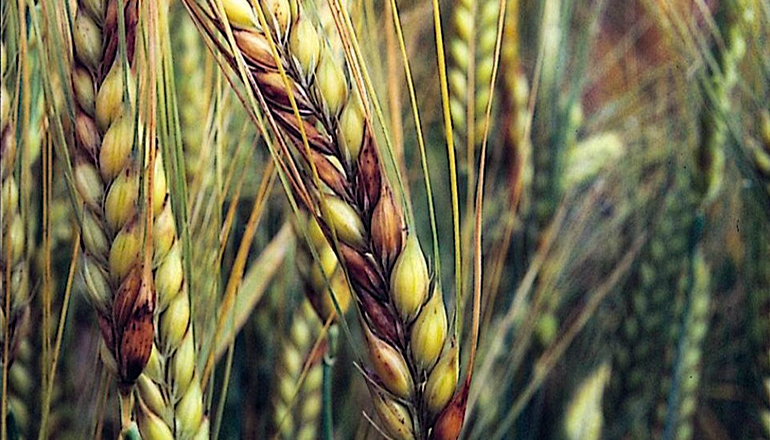Now is the time for wheat producers to make a plan to control Fusarium Head Blight (FHB) in their fields. FHB, or head scab, is a fungal disease that reduces yields and can impact the quality of the grain. In addition, the disease can produce mycotoxins, sometimes referred to as DON or vomitoxins, that are harmful to both humans and animals, and whose presence will lead to price docks at the point of sale.
Fusarium Head Blight infects fields at flowering, and symptoms can take up to three weeks to appear. The first symptoms are generally bleached spikelets on an otherwise green head. Upon further inspection, orange to pink colored spores can be seen. As symptoms progress, the grain will shrink and wrinkle, leading to poor quality grain with low test weights.
Conditions favoring FHB infection include warm, humid weather at or just before flowering. Wheat is susceptible to infection from flowering through the early dough stage. The fungus overwinters on corn residue and periods of high humidity with frequent rainfall promotes the production of spores that are transported to wheat on air currents. Optimum temperatures for infection are 75-85 F. As little as two to three days of light to moderate rainfall can also favor infection.
Several fungicides are labeled for control of FHB. Fungicides in the Triazole class (FRAC Class 3) are the most commonly recommended and are most effective when applied just before or at the onset of flowering. The timing of the application is critical, as fungicides applied several days after flowering are much less effective. Do NOT apply strobilurin fungicides to control FHB, as these products have been shown to increase the levels of DON in the harvested grain.
An online risk-assessment tool from Penn State University can help producers make decisions about applying fungicides. The tool uses weather data to determine the risk of FHB infection and can help determine whether fungicide applications are warranted. The tool currently predicts our risk of infection as low, but unpredictable weather between now and flowering can change our risk quickly.
For more information contact Andy Luke at 660-425-6434 or [email protected].







